by Inez Tan
When Mr Siu Kang Fook’s (RI, 1968) former schoolmates opened his recent email they were astonished—looking back at them from faded photographs were younger versions of themselves and their friends from fifty years ago. ‘My goodness I was so tiny and thin, cannot recognise myself!’ exclaimed Mr Lionel Lee in his reply. The old boys had submitted these passport-sized photographs to the General Office when they first entered RI, and had never seen them since.
In the days before digital databases like the Stamford Portal, the General Office was home to stacks of Student Life cards, each with a student’s passport-sized photograph, their name, address, birthday, nationality and House. When RI moved to Bishan, these cards—the profiles of every student that passed through the portals of RI from the 1960s to the early 1990s—were packed into more than forty boxes and kept in a storeroom. Mr Siu, an alumnus helping out at the Raffles Archives & Museum (RAM), opened the box nearest to the entrance of the storeroom and found it full of Student Life cards from the 1960s.
‘It was a few months before I found mine,’ he smiled.
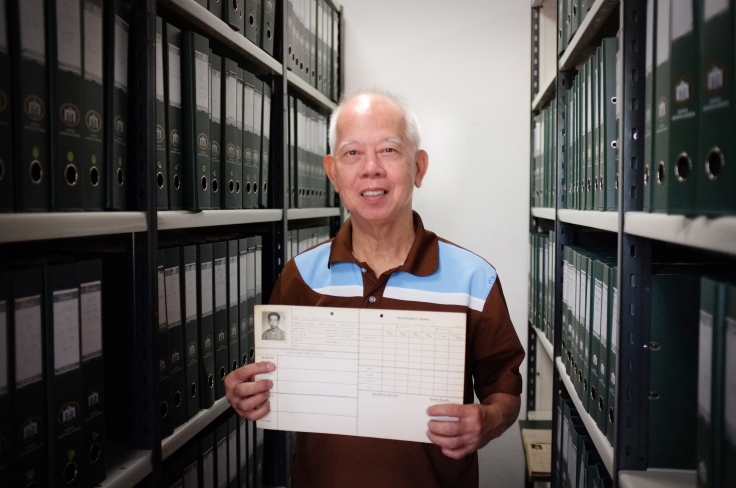
Thus, an idea was born. Mr Siu, whose previous undertakings include a book on Scouting in RI titled To SIR with Love, felt it was time for new project that coincides with Singapore’s 50th year of independence—an online yearbook for the 2000 Rafflesians who were studying in RI in 1965. The compilation will take its name from the ‘grandfather stories’ (i.e., long-winded tales from days of yore) shared by the old boys of that era: My Grandfather’s Class.
The Rafflesian, as younger Rafflesians know it, refers to none other than the school’s Yearbook. But back in the 1960s it was really more of a magazine, with features on school happenings, students-written articles, lists of student achievements, and reports on the goings-on of the Houses, clubs, societies and uniformed groups. The high lithographic printing costs of the publication were offset by advertisements from companies like Air India and OCBC, and students only needed to pay a dollar for a copy of their own.
In My Grandfather’s Class, Mr Siu will supplement material from the 1965 issue of The Rafflesian with event highlights from 1964 and 1966, class photographs when available, Student Life Card photographs of those who studied in RI from all three years, alumni’s accounts of their schooldays, and a dedication to Mr E W Jesudason, the Principal of RI at that time.
‘We liked him so much,’ said Mr Siu wistfully. ‘He always stressed that we should “serve the country”, and that we had to have a high level of discipline because “we are the premier school”’. The late Subhas Anandan (RI, 1965), who was one Singapore’s most famous criminal lawyers, also remembered Mr Jesudason with great fondness. ‘He was one of those who made life in RI a little more pleasant for me with all his amusing, sometimes even political comments,’ he wrote in his book, The Best I Could. ‘I remember him as a tough man who didn’t treat the sons of ministers and presidents differently from other students. His stint as an RI principal lasted only from 1963 to 1966 and I feel fortunate that my time in RI coincided with his tenure as a principal.’
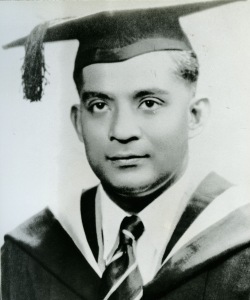
Mr Jesudason is best known as the principal who wrote the lyrics of the Institution Anthem, penning it according to his vision of the kind of students Rafflesians should be. He thoroughly believed that music has the power to build camaraderie, and often wrote inspiring lyrics about school spirit and friendship to tunes like Danny Boy. ‘The community feeling which is so important in a school can be inculcated in several ways, but the most enjoyable way of doing it is by singing together,’ he mused in the foreword of the RI Song-book, a collection of these songs.
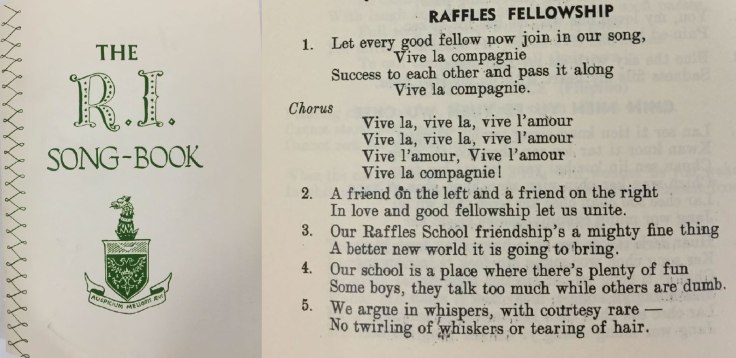
In fact, it was Mr Jesudason who commissioned the catchy Tamil song Munnaeru Vaalibaa (‘Move Forward, Youth’), a staple of Singapore’s National Day parades. In 1966 he asked RI Tamil teacher Mr S Jesudassan to write a song for the students to sing along to, and one year later Mr David Lim (RI’s head of music and MOE’s music director) decided to make it one of the official community songs that would be taught and sung in every school.
Community singing became a key aspect of Rafflesian life, and the students spent part of their assemblies belting out songs together in various languages. ‘Every week, he wanted us to sing songs like Ging Gang Goolie and Funiculì, Funiculà, so we started singing! And the other schools, CHIJ, SJI, St Andrew’s, they all said that RI boys were very sissy, singing all those Primary school songs again. But Jesudason felt that singing together would lift all our spirits. So he came up with the song-book, and we still treasure it today,’ said Mr Siu. Fifty years on, he and his friends could still sing the same songs with great gusto.
Mr Jesudason was also a strict disciplinarian; he dished out corporal punishment when he felt it necessary, and did not hesitate to cane male students publicly (but not before asking female staff and students to leave the venue). Nevertheless, he was a fair man. In The Best I Could, Subhas Anandan related how Mr Jesudason once reprimanded him before the principal and football players of English College Johore Bahru during the half time of the match between their school and RI. Mr Jesudason had seen Subhas, a key player, arriving late. To make matters worse, he had also spotted football teacher-in-charge Mr Sidhu personally handing Subhas his jersey.
‘What is wrong with your football master, holding on to your jersey, giving it to you and spoiling you? This is a breach of discipline of the highest order,’ Mr Jesudason shouted. Later that day, the football master explained to him that Subhas was late because he had represented the City District in the Inter-District Cross Country race at MacRitchie just minutes ago. Feeling rather bad, Mr Jesudason asked Subhas why he did not defend himself.
‘I didn’t want the principal and students of the other school to see that you were making an ass of yourself,’ came the reply.
Mr Jesudason looked at him angrily, and then burst out laughing. ‘You know, Subhas, that is the Rafflesian spirit. You didn’t want to embarrass your principal.’ He proudly shared this incident at the next school assembly.
Mr Siu explained that Mr Jesudason’s strictness was due in part to his salient belief that his students should—and would—hold themselves to high standards. He trusted the boys to behave, and in turn, many of the boys were determined to live up to his expectations. Mr Siu recounted with pride how, at a sports meet where Mrs Lee Kuan Yew was guest of honour, Mr Jesudason had assured her that no boy would steal the unguarded trophies. Not only were the trophies untouched, the winners and supporters also lined up before the podium when they were called. Mrs Lee Kuan Yew was impressed and commended the students for their behaviour.
The highlights of the years detailed in My Grandfather’s Class were undoubtedly Founder’s Day, Sports Day and the Prefects’ Investiture. During Mr Jesudason’s tenure, these school functions became very grand affairs. He instituted the Prefects’ Investiture, a ceremony in which elected students essentially became his right-hand men. During Founder’s Day and Sports Day the entire school community would congregate on the field, with the students wearing ties despite the heat. Teachers who were university graduates would don academic robes.
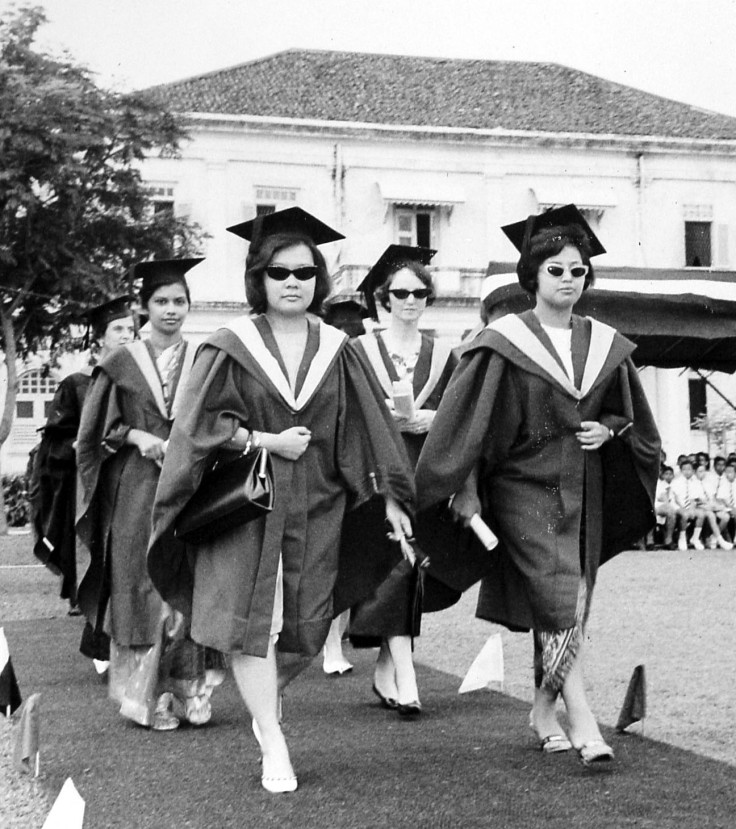
Sports Day would see the school field decked in a riot of colour as the Houses competed for the Best-decorated Shed award (‘shed’ referred to the stands from which the students cheered). Guests of honour included dignitaries like Mrs Lee Kuan Yew, and Toh Puan Noor Aishah, wife of President Yusof Ishak. For the Founder’s Day ceremonies, guests of honour included President Yusof Ishak and then-Minister of Education Mr Ong Pang Boon. The grandeur of the 1963 and 1964 Founder’s Day ceremonies were further underscored by performances by the Singapore Police Band, but in 1965, it was supplanted by something much closer to the school community’s heart: the RI Military Band, which was formed that January.
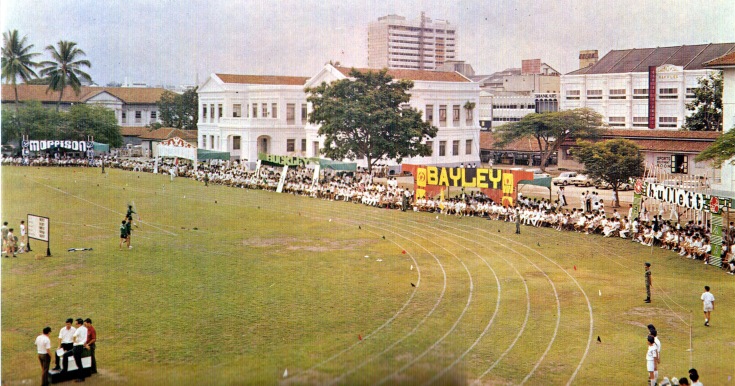
Despite the formality of these occasions, there was one school rule Mr Jesudason could not enforce. ‘He couldn’t ask all of us to wear white shoes,’ laughed Mr Siu. ‘Most of us weren’t the eldest in our families; we were not born right after the war. All our clothes were hand-me-downs; we wore black shoes, brown shoes, beige shoes. But we were all proud to have entered this school on our own merit.’
The 1960s were tumultuous nation-building years for Singapore. Mr Low Hou Loke vividly remembers that fateful day in 1965 when the nation became independent. ‘Some of us recalled PM Lee Kuan Yew breaking down and crying as he answered a reporter’s question, and the telecast had to be paused until he had control of his emotions,’ he wrote in his contribution to My Grandfather’s Class. ‘I declared to my schoolmates that I will try my best not to let him have any more reasons to weep again, as it broke my heart to see him so sad.’
For Mr Siu, the racial riots left a greater impression. ‘We, the younger students, were happy to be dismissed early. But all the Malay students had to be escorted home by a teacher. The teachers also set up a fund and bought canned food, in case Malay students stayed in school overnight because they were too scared to go home; RI was surrounded by streets inhabited by Chinese.’
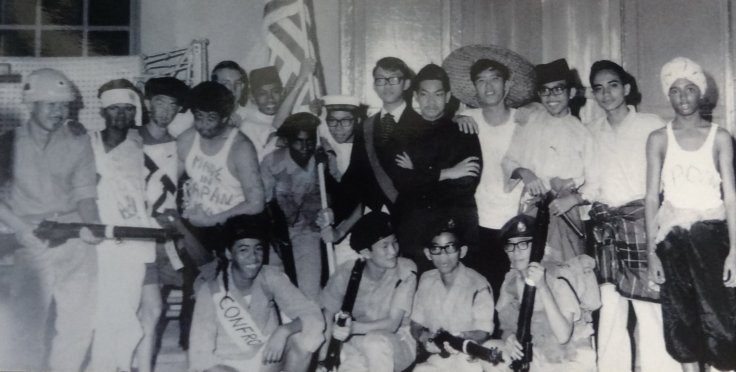
My Grandfather’s Class will also encapsulate the lighter side of growing up in the 1960s, such as schoolboy pranks like this one recounted by Mr Lionel Lee: ‘We had a Malay teacher we nicknamed “Tupai”, which is “squirrel” and the title of the first chapter of our textbook. Mr Tupai had a strange habit of ending his sentences with “eh”. One day we recited the national pledge as a class with Tupai presiding, and all of us punctuated every phrase with “eh”: “We the citizens eh of Singapore eh pledge ourselves eh as one united people eh.” Tupai turned around and screamed, “Who made that screeching noise?”’
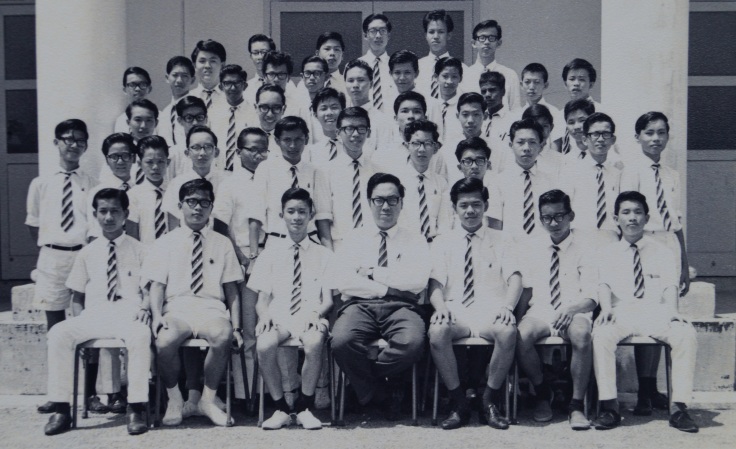
‘In those days, we played very hard and then last minute chiong,’ said Mr Siu, referring to how he and many of his schoolmates used to leave studying to the eleventh hour. ‘But when I got my first term results I was so scared as I cycled home; there were red marks all over my report card, I thought I’d surely be caned. But my father said, it can’t be helped, this was the prime minister’s (Lee Kuan Yew’s) school.’
Mr Lim Soon Hock, a member of RI’s Board of Governors, recalled a similar experience: ‘(My father) gave me words of encouragement: that I have to learn how to compete with the best and to meet exacting standards, and not give up. It had a profound bearing on what I accomplished in later life.’
Mr Siu, too, decided to run his own race—he knew that he may not be at the top of his class, but he was determined to graduate with a Grade 1 for the Cambridge examination. He eventually did well for his A-Levels, as did many of his schoolmates, who became President’s and Colombo Plan scholars.
‘We’re all proud of our achievements. Looking back after 50 years, we realised how much the school has done for us, and it’s time for us to “give back” in one way or another. Not just to RI, but to the country,’ said Mr Siu.
‘We’ve passed through the turbulent times (of the early 1960s) and seen the transformation of Singapore into a first world country. We have benefitted tremendously. This book will remind us how fortunate we were.’
Information is currently being compiled for My Grandfather’s Class, which is slated to be out later this year.


Leave a comment